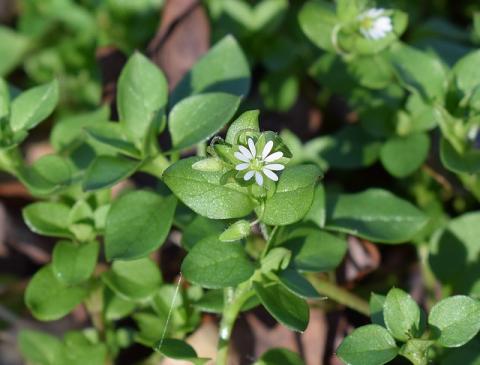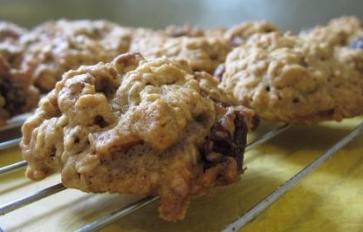
As the redbud trees begin to blossom and the chickweed pops up a brighter green, I know spring is near and it’s just about time to start foraging the early spring edibles. Some of these wild plants can only be harvested while they’re young and tender, while others will continue to provide throughout the whole season and into the summer.
These 5 wild edibles are all delicious and unique in their own way yet very familiar to some of the greens found in the market. As spring goes on you can find an abundance of wild edibles – some can be tastier than you might ever imagine! Not only do these foods taste good, but they are really good for our health.
- Chickweed (Stellaria media) ~ This little creeping plant is one of the first plants I notice upon the arrival of spring. Honestly, I keep my eye on it all year because it is edible and medicinal – it makes a great salad and a great salve! Chickweed doesn’t really die back in the winter months so much as go dormant, resting through the cold winter, but as soon as Spring is signaled, the leaves burst with life, reaching for the sun. The leaves also turn a lovely shade of bright green!
- Redbud Tree (Cercis canadensis) ~ The redbud is a beautiful and edible tree that smells so sweet. The blossoms of the redbud trees begin to take shape and bloom around the same time as the chickweed springs to life – sometimes it can take a little longer, but it’s close to the same time. The flowers can be harvested and eaten raw in a cold salad or boiled. The seeds can be roasted and ground into a meal or you can use them in place of poppy seeds.
- Lamb’s Quarters (Chenopodium album) ~ This plant is also known as pigweed because pigs love it! It’s a member of the mint family and tastes somewhat similar to spinach. I’ve met a few who actually prefer the Lamb’s Quarters to spinach. You can cook it just like you would spinach, and it goes well with all of the greens on this list for a nice green salad. You can harvest the greens throughout the spring and summer. When autumn comes, collect the seeds and use them like poppy seeds and redbud tree seeds. If you harvest a little from each plant every time, the plant will continue to produce.
- Poke (Phytolacca) ~ Yes, I know that poke, also known as Pokeberry, is toxic. The berries make great ink and the YOUNG leaf shoots are edible and safe to eat. They can be potent, so they need to be leached and blanched but it is an early spring tradition to collect, cook, and eat fresh poke salad. The trick is to only pick leaves that are six inches or smaller and to avoid any parts containing purple.
- Dandelion Leaf (Taraxacum officinale) ~ The young tender leaves of the dandelion make a delicious treat. The older leaves, unfortunately, can be too bitter and tough to chew. Once the dandelion flowers start blooming, it’s time for the plant’s harvesting season. However, the flowers are edible and can be used to make a beautiful dandelion wine. The roots of the plant are medicinal and can be roasted and used as a coffee substitute. Dandelion tea is full of antioxidants.
This planet is amazing; it provides every single thing we need to live life. Spring is just the tip of the iceberg when it comes to foraging wild food. As the months go on, the available food is more abundant and it seems to get sweeter with time – by the end of summer there are so many wild fruits readily available, if only you know what to look for. Knowing where to find food no matter where you are is extremely important when it comes to being self-sufficient and self-reliant. Always remember: you gotta strive to thrive! Happy foraging, my friends!








